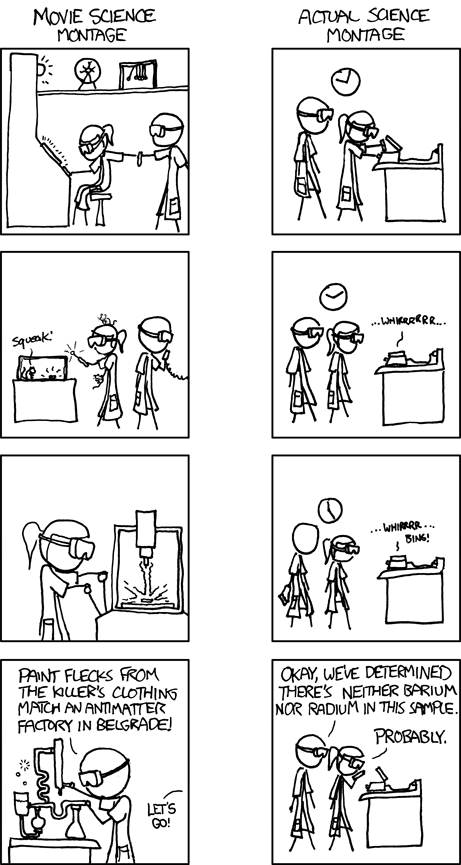Quantum Rocketry: thoughts on space battles
A kinetic impactor is basically just a slug that goes really fast and hits the enemy fighter, tearing through the hull, damaging delicate systems with vibrations, throwing gyroscopes out of alignment so that they spin into their enclosures and explode into shards, puncturing tanks of fuel and other consumables, or directly killing the pilot and crew. You know…bullets. But it sounds much more technical and science-fictiony to say “mass driver” or “kinetic lance” or something of the sort.
…
A definite downside to kinetic weapons on a starfighter is that they would impart momentum to the fighter or change its mass properties. Very large cannons or missiles might therefore be impractical, unless the fighter can quickly compensate for what is essentially a large rocket firing. Even that compensation might give the enemy just the window he needs…
That’s pretty good. But there’s a nit:
But while we’re talking about focused energy weapons, lets just go with a tool that we already use to cut sheet metal on Earth: lasers. In space, laser light will travel almost forever without dissipating from diffraction.
It’s a common misconception that lasers give off perfectly collimated light, but it just ain’t so. Lasers typically have a Gaussian profile, so the beam will diverge, though pretty slowly if you start with a large beam. Small beams diverge faster, and one of the things that can give you fits when playing around with laser diodes and their incredibly tiny beams. (The divergence and the asymmetric profile and the astigmatism of the beam. Oy!)
But I don’t think this is a problem. In fact, for a space weapon, you might want to focus it down to a small spot (the corollary to not being collimated is that you can’t focus down to a point in Gaussian-Optics land, but bigger beams can have smaller spots) in order to do damage, while the beam generation power density is small. If you know the range, you can adjust the focus of the beam.
I like the idea of maneuvering and firing other weapons while you wait for the main capacitor to recharge. I also think maybe your kinetic weapon would be moveable, and you would need to account for the momentum kick in your attack plan — in fact, timing the firing of the weapon to give you desired maneuvering could be an important tactic. Such as firing to change your direction, or firing aft to hasten your departure.

